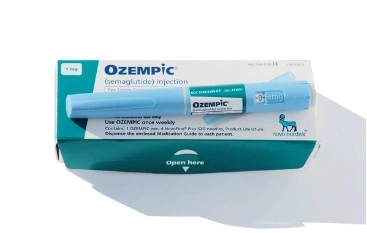
Navigating GLP‑1 Medications, Constipation, and Your Gut Microbiome
It’s no secret: GLP‑1 receptor agonists—like semaglutide, liraglutide, dulaglutide—have transformed metabolic and weight‑management treatments. But as our clinical practice continues to reveal, many people experience a troubling shift toward constipation or slowed motility after starting these medications. Could the gut microbiome be playing a hidden role in both the benefits of GLP-1s as well as constipation?
The Microbial Connection: GLP‑1 + the Gut Microbiome
Yes, there is growing evidence that GLP‑1 medications aren't just influencing hunger and blood sugar—they’re reshaping your gut ecology, too.
Microbial Shifts Observed:
- Liraglutide reliably boosts beneficial microbes like Akkermansia muciniphila, Faecalibacterium prausnitzii, Lactobacillus reuteri, Bifidobacterium, and SCFA-producers—supporting gut barrier integrity, reducing inflammation, and promoting metabolic health
- Semaglutide shows promise—raising Akkermansia and other good players—but in some cases also narrows microbial diversity, depending on diet, health status, and treatment duration .
From Adjustment Phase to Long-Term Effects
When starting GLP‑1 therapy, many clients first notice slowed gastric emptying—causing nausea, bloating, and constipation. Over time, this slowdown can create an environment conducive to certain microbes that thrive in stagnation, like methane-producers or those that might predispose to SIBO.
While published science is still slow to confirm the microbial mechanisms of GLP-1 induced constipation and the long-term impact, what we are finding in our clients is that over the long haul, if motility is not addressed, these shifts may become entrenched.
One client on semaglutide who came to us after the fact displayed increases in Proteobacteria and a loss of butyrate producers. It took half a year to restore his microbiome.
We monitored a second client through re-attempting her GLP-1 after an initial negative response and found that she immediately relapsed with SIBO even with a combination of herbal and prescription prokinetics. This relapse was unpleasant enough that she could not continue her GLP-1.
Why This Matters
Slow transit isn’t just about discomfort—it can alter your microbiome homeostasis:
- Methanogens (methane-producing microbes) stem from slow motility and can perpetuate constipation.
- SCFA imbalances—impact your intestinal terrain and propensity for inflammation
- Barrier health may suffer if dysbiosis takes root. Think Leaky Gut.
- Inflammation and dysbiosis may ensue, compounding the cycle.
Practical Strategies: Keep the Microbiome Moving
Here’s how we can support gut resilience during GLP‑1 therapy:
1. Hydrate + Move
Adequate (electrolyte rich) fluids such as coconut water, herbal tea or electrolyte water. Gentle movement such as yoga or walks after meals can help shift motility.
2. Introduce Fiber Gradually
Soluble fiber—think oats, lentils, kiwi or papaya—feeds beneficial microbes and sparks SCFA production. Avoid insoluble fiber (wheat bran) if fiber sensitive. In any case, go slow as for some the tweak may worsen bloating or gas during dose adjustment. Start with just a tsp of fiber rich food or a pinch of a slow fermenting soluble fiber supplement (PHGG) and gradually increase as tolerated.
3. Mind the Microbial Players
- Incorporate prebiotics, fermented foods, and consider targeted probiotic strains like Lactobacillus reuteri DSM 17938 or Bifidobacterium lactis HN019
- Monitor for SIBO or methane dominance—especially when constipation is stubborn—and treat accordingly.
4. Dose Titration & Meal Timing
Slowly increase GLP‑1 doses and coordinate with meals to manage side effects, per your health care providers guidance
5. Clinical Monitoring
If symptoms persist, deeper evaluation—like transit studies, microbiome testing, or SCFA analysis—can be invaluable to tailor interventions.
6. Additional Support
Your healthcare provider might suggest stronger motility support such as Magnesium oxide or even a prescription prokinetic if warranted.
In Summary
GLP‑1 medications do more than reduce appetite—they reshape gut microbiota. While these shifts often support metabolic health, they may in some slow motility and predispose the gut to imbalances if not supported.
In your journey—or your clients'—awareness is power. Prioritize hydration, movement, nutrition, gentle fiber introduction, and microbiome support to keep them on track ensuring they actually experience long-term benefit from the use of GLP-1s.
Wang, J., et al. (2024). Effects of GLP-1 receptor agonists on gut microbiota: a systematic review. Nutrients, 16(3), 1203.
https://www.mdpi.com/2072-6643/16/3/1203
International Probiotics Association. (2024). New Weight-Loss Drugs and the Gut Microbiota.
https://internationalprobiotics.org/home/new-weight-loss-drugs-gut-microbiota
News Medical Life Sciences. (2024). GLP-1 agonists may reshape the gut microbiome.
https://www.news-medical.net/news/20250411/GLP-1-agonists-may-reshape-the-gut-microbiome.aspx
HDRx Functional Medicine. (2023). Gut Health and Weight Loss: Dietary Fiber, the Microbiome, and GLP-1.
https://www.hdrx.com/gastroenterology/gut-health-and-weight-loss-dietary-fiber-the-microbiome-and-glp-1
Effects of GLP‑1 Analogues and Agonists on the Gut Microbiota: A Systematic Review
Kałużna‑Czaplińska, J., & Gątarek, P. (2025). Effects of GLP‑1 Analogues and Agonists on the Gut Microbiota: A Systematic Review. Nutrients, 17(8), 1303. https://doi.org/10.3390/nu17081303 MDPI
Rebalancing the Gut: Glucagon‑Like Peptide‑1 Agonists as a Strategy for Obesity and Metabolic Health
Singh, K., Aulakh, S. K., Nijjar, G. S., Luthra, S., Sandhu, A. P. S., Tanvir, F., Kaur, Y., Singla, A., Sirjana Kaur, M., & others. (2024). Rebalancing the Gut: Glucagon‑Like Peptide‑1 Agonists as a Strategy for Obesity and Metabolic Health. Cureus, 16(7), e64738. https://doi.org/10.7759/cureus.64738 — PMCID: PMC11329331
Categories: constipation GLP-1 metabolic health Tags: constipation GLP-1
